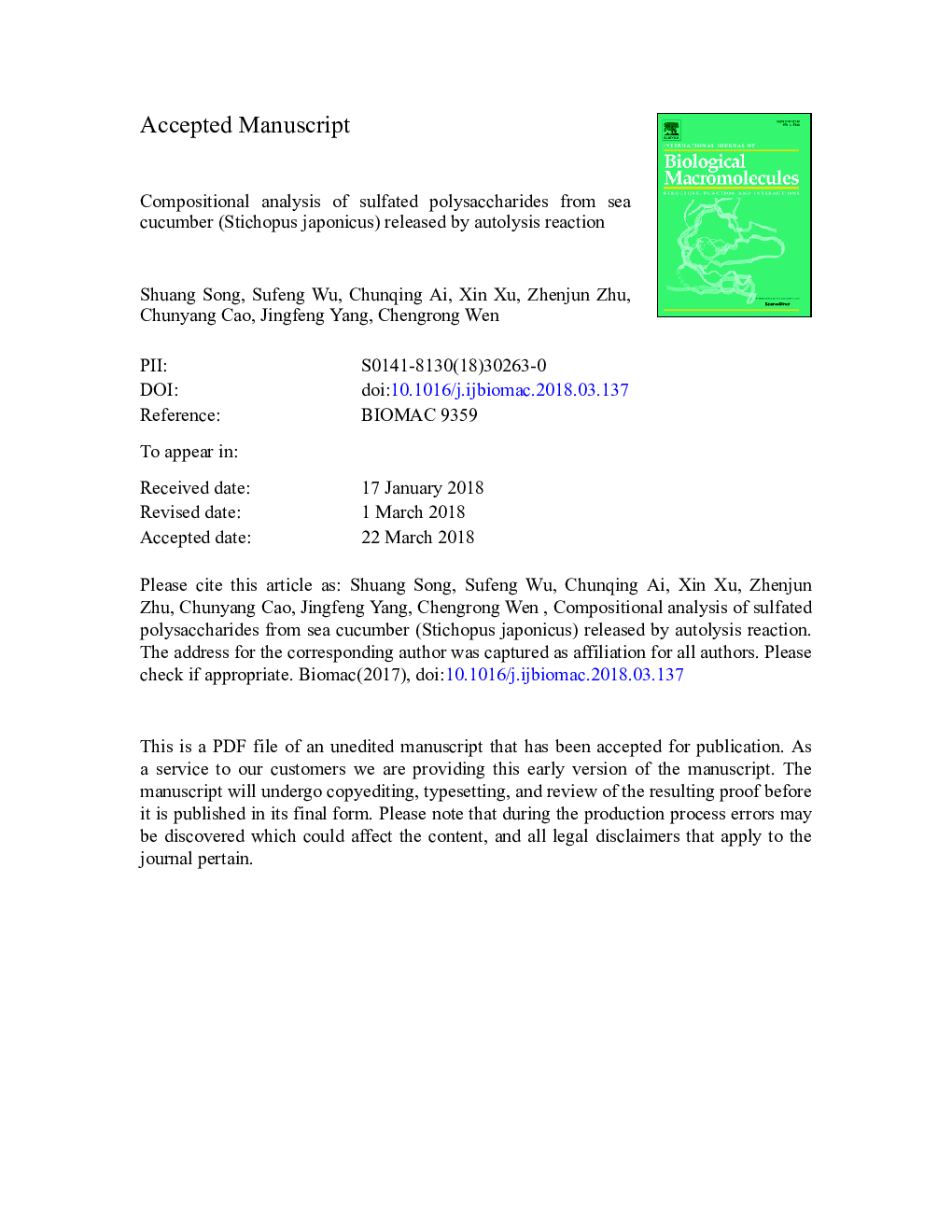| Article ID | Journal | Published Year | Pages | File Type |
|---|---|---|---|---|
| 8327300 | International Journal of Biological Macromolecules | 2018 | 27 Pages |
Abstract
Autolysis is not only a major reason for postharvest quality deterioration of sea cucumber, but also a promising alternative for exogenous protease to produce peptides or polysaccharides. However, little has been known about the effects of autolysis on bioactive polysaccharides of sea cucumber. Concerning the quality and safety of sea cucumber products involved autolysis reaction, the present study focused on the chemical composition of sulfated polysaccharides (SPs) released by autolysis reaction. Chemical analysis indicated that after 3-day autolysis 63% of sulfated polysaccharides were liberated but with protein chains at their reducing ends. Then the composition of SP obtained by autolysis (A-SP) was compared with that of total SPs (T-SP) via a series of analysis techniques, including FTIR, 1H NMR, HPLC and mass spectroscopy. As indicated by the results, fucan to fucosylated chondroitin sulfate ratio was found high in A-SP compared to T-SP, fucan with a lower molecular weight was the major fraction in A-SP, and the di-sulfated Fuc residue observed in T-SP was absent in A-SP. To conclude, A-SP differed greatly from T-SP in the chemical composition, suggesting possible changes on their bioactivities.
Related Topics
Life Sciences
Biochemistry, Genetics and Molecular Biology
Biochemistry
Authors
Shuang Song, Sufeng Wu, Chunqing Ai, Xin Xu, Zhenjun Zhu, Chunyang Cao, Jingfeng Yang, Chengrong Wen,
